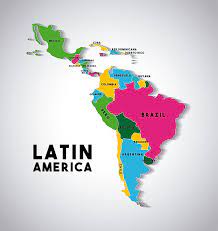Table of Contents
Introduction
China has emerged as a major force in Latin America. China has become a much more significant political and economic force over time. A scenario like this put the United States’ influence to the test, and it persisted unabatedly after the Soviet Union was divided until the start of the twenty-first century.
According to the article, China’s positional advantage in the region will be replaced by increased integration of Latin America and China in trade, infrastructure development, aid, and political leverage, as well as a lack of attention from U.S. policymakers.
Loss Of The U.S. Positional Advantage in Latin America
Admiral Craig S. Faller, the former commander of U.S. Southern Command (2021), made remarks that make these reflections clear when he claimed that the United States is losing its “positional advantage” in the area.
It is currently ranked among the top trading partners in a number of South American nations. It has made investments in twenty-one out of thirty-four countries’ infrastructure development programmes in recent years.
The infrastructure projects include everything from space stations to nuclear power.
China’s entry into the region is therefore seen with more suspicion as it seeks to subvert American influence for the first time since the 1823 codification of the Monroe Doctrine, which opposed the continuous colonisation of the region by the extraterritorial European powers.
China’s efforts to fill the void left by the United States’ lack of regional leadership in Latin America are thus evident in its involvement in the region, which has involved sending billions of dollars through its banks.
China’s Growing Significance
China’s presence in the area will bolster authoritarian governments and erode support for a democratic governance model in Latin America.
The region’s economic interdependence will rise in tandem with China’s economic expansion. During the Cold War, the United States employed “strategic denial” tactics in the region to suppress socialist and communist movements.
By intervening in Cuba and Puerto Rico during the pre-Cold War era, it aimed to stop European expansionism in the area. As a result, the United States’ influence in Latin America quickly came to be seen as a “international police power.”
Although China still has a small footprint in the area, its influence has increased dramatically. In terms of commerce, China’s bilateral trade volume with Latin America has increased over time.
From US$ 12.6 billion in 2001 to US$ 100 billion in 2010, trade has increased. China’s involvement in the region extends beyond trade in goods and services; it also includes the development of infrastructure with the goal of enhancing the economic potential of the Latin American nations.
These activities include holdings in oil, silver, and copper reserves. China’s Minmetals Corporation wants to procure 55,000 tonnes of copper in fifteen years for Chile. Moving up to third place in five years (2000-2005), China has surpassed the US to become the region’s biggest oil consumer since 2002.
To shift the region’s supply chains back to China, China has made investments in sectors including 5G technology, energy supply, cloud computing, and artificial intelligence in recent years.
China’s political development in the region has paralleled that of the United States in recent years, with notable instances of coups in Guatemala and support for military dictators such as Pinochet in Chile.
China’s increasing significance stems not only from economic interdependence but also from its ability to exert political and economic pressure to advance its interests related to economic security.
As the former Bolsonaro administration worked to keep Chinese companies like Huawei out of the 5G auction, China threatened to stop the distribution of COVID-19 vaccines in Brazil. Pressure from their mounting debt hampered the expansion of their industries and halted the advancement of their economies in nations like Ecuador and Argentina.
These actions bear resemblance to those taken by the United States in Guatemala to safeguard the interests of the United Fruit Company (UFCO) in the United States under the pretext of containing communism in Latin America.
In the case of China, political involvement is manifested not only through economic and political coercion but also through the increasing privatisation of numerous Latin American nations.
China has used its ‘Going Out‘ strategy to invest large sums of money over the years in Latin America’s legal and PR sectors. Such engagements cast doubt on the ability of American-led Western development organisations to address China’s social and environmental costs.
As a result, this involvement deters any attempts to target Chinese companies and represents China’s expanding political influence in the region.
Lack of Attention by the U.S.
Through the spread of communism, the United States’ foreign policy sought to compete with the Soviet Union during the Cold War, but competing with China presented different obstacles.
China, on the other hand, has carried out 150 aid and infrastructure development projects. As a result, the United States’ resources will be under pressure from competing with such a powerful nation, which deters policymakers and resource allocation.
The United States only provided $3 billion of the aid budget in 2019, while China increased its aid from $1.7 billion to $124.8 billion, leaving the region heavily indebted to Beijing.
China entered the political and economic spheres of Latin America because the United States abandoned its foreign policy initiatives in the region due to the lack of extraterritorial powers since the turn of the twenty-first century.
Conclusion
In conclusion, the prominence of American power in the region has been called into question by China’s engagement in the area through trade and infrastructure development projects, as well as increased political development.
Based on the observations presented in the article, China is making an effort to fill the void left by the United States’ disregard for Latin America among policymakers. China has been able to strengthen its influence politically and economically due to this policy divergence.
